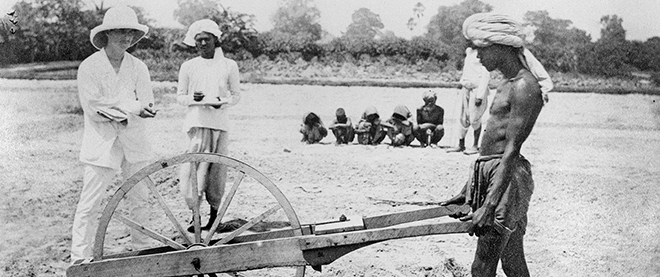It’s complicated: understanding the relationship between the West and Asia
A new book explores what the East learned from both the brutality and the economic success of the West
Science Museum
Share

In the late spring of 1905, for probably the first time ever, the name Togo began to appear outside its native islands. From middle-class Turkish households to dirt-poor Indian villages, Asian parents named their newborns after the Japanese admiral whose forces had destroyed the Russian fleet in the pivotal battle of Tsushima. The battle has a place of some prominence in conventional Western histories, as a crucial moment in the making of the Russian Revolution and the Japanese empire, both ominous developments for liberal democracies.
But, as Indian writer Pankaj Mishra argues in From the Ruins of Empire, those narratives miss Tsushima’s psychological impact in the East. After a century of brutal and seemingly unstoppable Western imperialism—economic exploitation punctuated with humiliations ranging from gunning down the last heirs to the Mughal empire in India to the burning of the summer palace in Beijing—Asians everywhere exulted in the first modern victory of an Eastern power over a Western nation. North Americans and Europeans might still think of the past 100 years in terms of victory in the world wars and Cold War, Mishra writes, but for the majority of the world’s population the century’s true central event is the resurrection of Asia.
Mishra, who divides his time between Britain and India, is an accomplished journalist and author, but he’s probably best-known for a review he wrote last fall for the London Review of Books. In it Mishra eviscerated Niall Ferguson’s Civilization: The West and the Rest, the British-American historian’s celebration of the West’s “killer apps”—its key technological, financial and organizational advances—that allowed it to rule the world a century ago. Mishra was already researching his own book, and had any number of substantiative issues with Ferguson, but what particularly incensed him was what he took as a certain tone-deafness. “The terminology was rather unfortunate,” Mishra remarks over the phone from London. “Killer apps?”
In Mishra’s account, the adjective takes pride of place over the noun. In much standard history, the rise of the West focuses on its slow internal liberalizing up until its full human-rights-respectful present; its past conquests in the rest of the world, including the colonization of North America, have an aura of inevitability (the power of the apps, especially technology), occasionally even of benignity (improving local conditions, especially in education and health). Mishra focuses on the killer part: the “butcher and bolt” military attacks, the savage suppression of revolts, and the destruction of ancient ways of life by the expropriation of land and the pauperizing of artisan economies with a flood of Western industrial products.
Just as wounding for Asian elites was the contempt with which the blows were delivered. Despite the abolition of slavery, Western racism grew ever more virulent over the 19th century, because Westerners, no longer holding to a might-makes-right philosophy at home, needed a rationale (racial inferiority) for ruling others. “You’d think by now,” Mishra dryly remarks, “we could all agree that imperialism was disastrous for the colonized and degrading for the colonizers.”
From the Ruins of Empire neatly frames a 200-year-long story with the turning of three centuries. Around 1800, Western ambassadors would complain bitterly about the condescension and indifference with which they and their trade goods were greeted by the Chinese imperial court. In 1900, Western nations—and Japan—were busy carving up China at the point of a bayonet. By 2000, China was rushing to complete the Beijing Olympics, the sign and seal of its emergence as a great power. A tale, in short, less of a revolution in human affairs than of a return to historic norms. In the years in between, though, Asia was turned upside down.
Under the Western onslaught, Asian thinkers were not only divided among themselves but within themselves, often moving from proposal to proposal. How much Western modernity to embrace was an endless question. What was enough to counter “the blue-eyed, red-bearded” invaders, as one despairing Japanese writer called them, without actually becoming them? Was religion the problem? Or the solution? Eventually the roots of still dominant ideologies, from Chinese state capitalism (under Communist rule) to militant Islamism, took hold.
And that’s what gives a touch of tragedy to Mishra’s book. The two most enthusiastically welcomed Western apps, the author says sadly, were “efficient means of mass killing and the entire apparatus of the nation-state,” even when the latter was ruthlessly imposed on body politics ill-suited to it. Even Japan, the West’s most successful imitator, learned as much from its model’s worst aspects—aggressive colonization and racial contempt—than its most positive. Asian societies are significant forces in the world today, but they have by no means wholly recovered from the recent past.